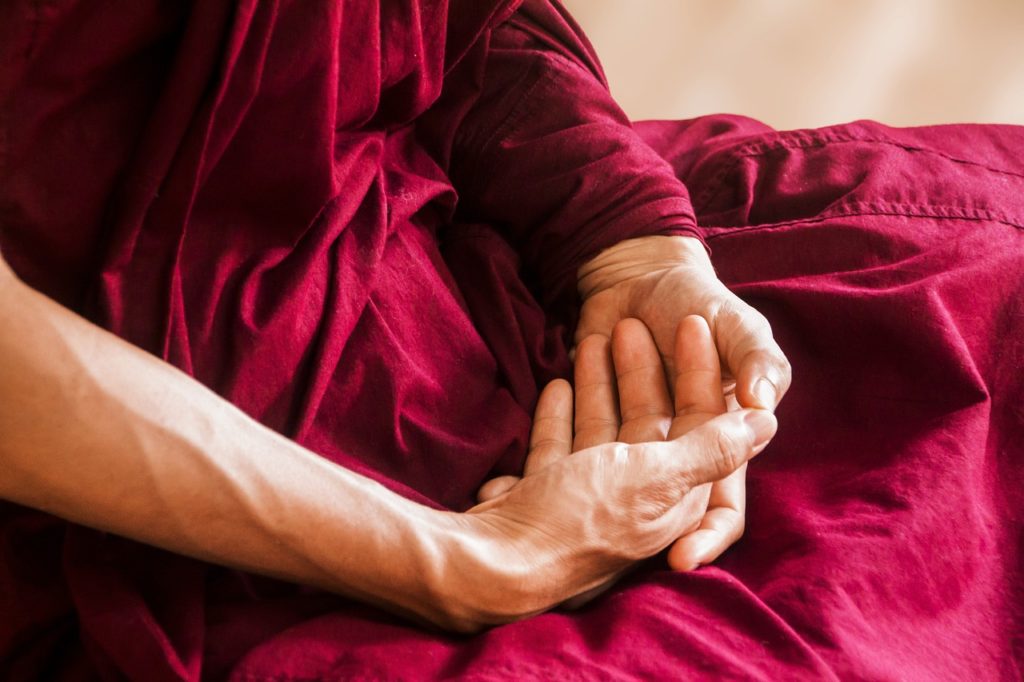Chi is the electromagnetic life force that is invisible and cannot be seen, but it flows through all of us. On the physical level, it is the air that we take in and breathe out of our lungs, helping us to feel alive. Our lives hang on by this thin thread of breathing every second of every day, even in our sleep.
When was the last time you thought about the fact that your heart keeps beating and your lungs encourage breathing without you needing to think about that process?
That air we breathe mixes with the nutrients we consume, refining the energy into something that takes solid form. It becomes our bones, blood, and flesh without losing the rhythm that we experience as we inhale and exhale. The vital organs refine Chi even further, sending its power to our higher brain functions.
It becomes the foundation of our emotions, dreams, and thoughts. This process is where we find the human will to continue with life. It drives feelings of love, comforts in grief, and helps us to embrace the cycle of life.
You would then take your Chi to practice qigong to maximize your health according to ancient Chinese tradition.
What Is the Practice of Qigong?

Qigong is a practice that goes by several different names or spellings, but every variation is still the same effort at cultivating life energy. It is a holistic system that coordinates body movements and posture with meditation and breathing.
The purpose of these actions is to embrace the spiritual life, promote greater health, and offer training in the martial arts. You would follow whatever path was necessary to help your life achieve the balance that you need to have.
There are several ways to embrace qigong in your life. The most popular method is to use moving meditation, which coordinates slow movements with deep, rhythmic breathing. This set of actions creates a calmer state of mind. It is useful for relaxation, exercises, and even self-healing.
Four different practices are available to incorporate into your routine if you’re interested in the idea of tapping into your Chi through the use of qigong.
1. Meditative practices are used most often.
Most people use visualization, mantras, sound, and breath awareness to focus on the circulation of their Chi. Some spiritual practices seek to still the mind through the use of this practice, while others attempt to cultivate more energy to use throughout the day. The ultimate goal is some form of self-enlightenment.
2. Static practices hold postures for a sustained period.
This option is similar to what you would experience with the modern practice of yoga. By holding positions that require strength and balance, the static stance helps to form a process for healing that can add physical flexibility to your life. As your body becomes able to move around more, the Chi will flow more effectively.
3. Dynamic practices are graceful, choreographed movements.
Students in martial arts are often taught forms, such as taekwondo’s Poomsae, that are a form of qigong. These fluid movements are often slow, stylized actions that work to create muscle memory while encouraging moving meditation. It is also a form of gentle exercise that can be repeated indefinitely to strength and stretch out the body.
4. External agents can enhance the benefits of qigong.
Most systems of qigong encourage participants to use external agents as a way to enhance their Chi. Physical manipulation, massage, herbs and spices, and specialized foods are all potential elements that you might consider adding to your life as you work to improve your energy levels.
Scientific Basis of Qigong in China

The world of science seeks to describe and verify the effects of qigong in a person’s life. Empirical research focuses on the mechanisms of each impact to form theories that can turn into methodologies that are useful for further study.
It is important to remember that the existence of Chi has never been independently verified. Experimental settings have not documented this invisible life force in any way.
That’s why you often see qigong in complementary, integrative, or alternative medicine. Acupuncture, deep breathing exercises, and other perspectives that can help with specific conditions.
There is a growing movement in the conventional medical community to accept these practices, but a lack of peer-reviewed evidence does hold back its full integration into the healthcare community. That’s why you can often see it in recreational activities, preventative medicine techniques, and life coaching.
In China, the therapeutic use of qigong is treated differently. It is a standard medical technique, so doctors use it to treat a wide variety of conditions. There may be no high-quality evidence for this approach from a medical perspective, but it is used for hypertension, obesity, tumors, cancer, and even cervical spondylosis.
Should I Be Practicing Qigong?

Qigong is useful when you need to enhance the quality of sleep that you receive each night. It can help you to feel like you have more balance in your life. Some individuals see improvements in their blood pressure numbers and heart rate after incorporating these practices in their life for 8-12 consecutive weeks.
There can be mental health benefits with the practice of qigong as well. It may decrease stress reactions, anxiety, or depression-like symptoms. An improved mood is a possible outcome as well with regular practice.
As with most treatment efforts, one must balance the idea of helping the body against the potential harm that may happen. If you want to embrace the ideas of Chi and qigong, then it is helpful to speak with your doctor first to see if your health is in a place where these actions are beneficial.




